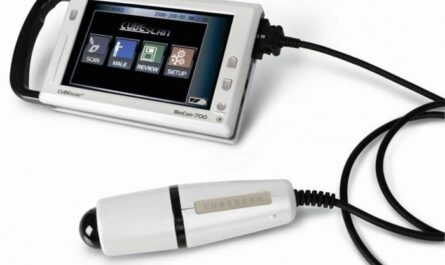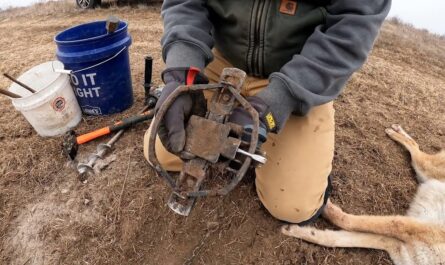Off-highway vehicles (OHVs) like construction equipment, agricultural machinery, mining trucks play a crucial role in infrastructural development and operations. However, managing a fleet of such vehicles comes with unique challenges due to their intensive use in remote and harsh work environments. This is where OHV telematics comes into play by providing real-time insights into the location, health, and performance of each machine.
Telematics systems equip OHVs with devices that track critical parameters and transmit the data securely to the base station via wireless connectivity options. This allows fleet managers and owners to gain remote visibility and take prompt corrective actions to optimize operations. Some key elements of Off-Highway Vehicle (OHV) Telematics and the benefits they provide are discussed below.
Access to Off-highway Vehicle (OHV) Telematics
The telematics control unit installed on each vehicle continuously monitors metrics like engine runtime, fuel level, odometer reading, idle time, diagnostic trouble codes, and geographical position. All this operational data is transmitted online to a web or mobile-based fleet management platform.
Managers can access the dashboard from anywhere and get a consolidated view of their dispersed vehicle network. This brings real-time visibility into machine utilization, fuel consumption patterns, idle time waste, location of stationary machines and those in motion. Any anomalies or issues impacting productivity are highlighted.
Predictive Maintenance and Lower Repair Costs
Telematics systems help detect machine faults at an early stage by monitoring various engine and system parameters. The control hardware identifies abnormalities by comparing live sensor input against predefined thresholds. Once a potential issue is detected, a diagnostic trouble code is reported over the air.
This capability enables condition-based or predictive maintenance by alerting managers in advance about pending component failures or performance degradation. Corrective actions can be planned without unnecessary delays when the vehicles return to the depot. This significantly reduces downtime by eliminating breakdowns and assists in scheduling planned maintenance around workload. Regular servicing also extends equipment life, lowering long-term repair costs.
Theft Recovery and Fleet Security
OHVs engaged in outdoor operations away from facilities are prone to theft risks. Telematics protects such valuable mobile assets by facilitating real-time GPS tracking of vehicle locations. If a machine is stolen or moved beyond geo-fenced boundaries, automated alerts are sent to managers.
They can immediately view the new location on digital maps using the management portal. In some cases, advanced systems also allow remotely disabling the ignition or fuel supply. This capability aids swift recovery and handover to authorities. Overall, telematics bolsters fleet security management for off-road equipment operating independently.
Fuel Management and Eco-driving
Uncontrolled idling wastes a considerable amount of fuel across a large telematics-enabled OHV fleet. Remote monitoring reveals such inefficient practices and helps identify underperforming drivers. Managers receive automatic alerts for excessive idling and can counsel operators on optimizing habits to conserve fuel.
Data-driven insights from the telematics platform further help analyze fuel fill levels against operating hours. Any leakage or pilferage issues are easy to detect. Historical trends spotlight seasonal variances and scope for improving fuel economy. Over time, telematics nurtures eco-driving techniques to minimize environmental impact and reduce overall fuel expenses.
Regulatory Compliance Tracking
Government regulations mandate routine servicing, certification and documentation for certain types of heavy-duty vehicles. Telematics eases compliance workflows by digitally archiving all on-vehicle activities, repairs, and inspection history on an individual asset level.
Complete equipment records are just a few taps away for managers and regulatory audits. Automatic alerts keep everyone notified in advance about pending certification renewals, tests or statutory paperwork deadlines. Telematics streamlines adherence to safety and emissions norms for off-highway fleets and assists with necessary compliance reporting.
Improved Decision-making and Productivity
Data-backed visibility into assets, their utilization patterns and worksite conditions helps decipher inefficiencies across dispersed operations. With intelligence from telematics, managers make informed strategic calls about rightsizing the fleet, optimizing routes, aligning work schedules or replacing underperforming equipment.
Overall equipment effectiveness and productivity metrics are easy to track. Under-delivering teams and sites demanding higher resource allocation are identifiable. Data sharing aids collaboration between field supervisors and head office for faster troubleshooting. Decision cycles are accelerated with evidence-based insights into planning capital expenditure and resource procurement
Overcoming Telematics Implementation Challenges
While the above-discussed outcomes demonstrate OHV telematics’ clear value proposition, certain challenges must be addressed cautiously during deployment:
– Limited or patchy cellular networks in remote jobsites require robust dual-mode connectivity solutions. Satellite transmission ensures uninterrupted tracking and diagnostics.
– Optical configuration specific to each machine model avoids costly hardware customization for the retrofit. Standard plug-and-play modules ease scalability.
– Operator buy-in depends on non-intrusive design not interfering with machine functions or work rhythms. Simple interfaces inspire usage and reporting accuracy.
– Upfront investment needs justification through realistic return-on-investment calculations factoring total cost of ownership over equipment lifecycles.
– Data security, privacy and ownership policies require clarity to address customer concerns if sharing operational intelligence externally.
As industries adopt Industry 4.0 practices, the digitization of mobile assets like off-highway vehicles will only accelerate. Advanced telematics encompassing predictive analytics, computer vision, augmented reality, and integration with other Industry IoT systems will deliver even deeper insights. This would further optimize operations, enhance fleet security, improve driver safety and training, and help achieve long-term sustainability goals. With careful planning, OHV telematics offers immense potential to streamline fleet management processes, decision making, and business efficiency through actionable real-time data and insights.
*Note:
1. Source: Coherent Market Insights, Public sources, Desk research
2. We have leveraged AI tools to mine information and compile it




